A brass vs bronze vs copper comparison is vital because it is very easy to muddle up these metals. In addition, the variations between these metal options are very subtle. Thus, parts designers may easily get confused during material selection. Moreover, the similarities in the elemental composition of these metals make it even harder to classify them.
Although there is a slight color difference, you may not quickly identify the metals apart. The more daunting part is that you can’t choose just any of them for your applications. Despite their many similarities, they also have many distinct features. Therefore, brass may not be very suitable for certain applications where you would normally use copper.
This article brings you a detailed comparison that will establish the difference between brass, bronze, and copper. It also outlines their distinct features, available alloys, applications, and many more. The information here will help you make the best metal choices for your metal projects.
Brass vs Bronze vs Copper: A Detailed Comparison
As we mentioned earlier, these metals have many features that differentiate them from one another. We will break down these differences into different sections to help you understand them better.
Available Alloys
Brass Alloys
The elemental composition of brass gives it the versatility to come in several different alloys. Some of the most popular brass in rapid prototyping include:
- Alloy 260. This alloy is also referred to as cartridge brass. It demonstrates excellent cold working characteristics. Thus, Alloy 260 is useful in automobiles, ammunition, hardware, and fasteners.
- Alloy 272. Popularly known as yellow brass, alloy 272 has about 33% zinc. It is mainly suitable for industrial applications.
- Alloy 330. This brass alloy is valuable in areas where you require high machinability. Its low lead content makes it suitable for cold-working. Many manufacturers choose alloy 330 for piping applications.
- Alloy 353. Clock brass helps fabricate high-precision parts like clock parts due to its excellent machinability.
- Alloy 360. This is the most common grade of brass available. It shows excellent formability and machinability. Alloy 360 is also very suitable for brazing and soldering applications. In addition, designers and machinists choose this alloy to manufacture fittings, fasteners, valves, and hardware components.
- Alloy 464. This alloy is also known as naval brass, and it is famous due to its excellent corrosion resistance. It can also withstand a wide range of temperature changes. The suitability to cold and hot forming processes, bending, soldering, welding, etc., makes it useful for many applications.
Bronze Alloys
Several bronze alloys are also available based on their composition. The most common grades are:
- Alloy 932. Manufacturers employ this high-leaded bronze for making washers, bushings, and other non-pressure components.
- Alloy 954. This is an aluminum bronze alloy used for industrial and mounting equipment. It is suitable for use in many environments.
Copper Alloys
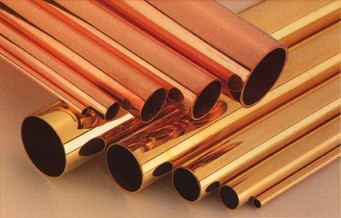
Copper material is another useful option in rapid prototyping. Some of the most commonly used copper alloys are:
- Alloy 101. This oxygen-free copper is suitable whenever you need high ductility and electrical conductivity.
- Alloy 110. Electrolytic (ETP) copper demonstrates the highest thermal and electrical conductivity. It also has excellent ductility and malleability.
- Alloy 122. While it is quite similar to Alloy 110 mechanically, it has superior weldability and formability.
- Alloy 145. This is tellurium copper. It has about 0.7 percent tellurium content. Like many other copper alloys, it has excellent electrical and thermal conductivity, superior machinability, and high formability.
Material Properties Differences Between Brass, Bronze and Copper
Understanding the differences in material properties will help you better decide between brass, bronze, or copper. The following provides you with detailed information.
· Element Composition
Copper is a non-ferrous metal existing in its pure state. Unlike bronze and brass, this metal is naturally occurring, and you can use it directly for processing. On the other hand, brass is an alloy of copper and zinc. It often contains lead, and it may also include manganese, iron, aluminum, silicon, and other elements.
Bronze is an alloy of copper, and it often contains a considerable amount of tin as its primary element. However, it also has nickel, aluminum, phosphorus, zinc, and others.
· Corrosion Resistance
One of the ways manufacturers draw a comparison between bronze vs copper is by using their corrosion resistance. Bronze, an alloy of copper, often oxidizes upon exposure to air. Thus, it forms a protective layer (mottled patina). As a result, bronze is adequately prevented from corrosion.
Bronze can withstand saltwater environments. Thus, it is very useful in marine applications and boat fittings. However, the copper content of this metal degrades upon continuous exposure to chlorine compounds. Copper also undergoes oxidate to form a protective layer for excellent corrosion resistance.
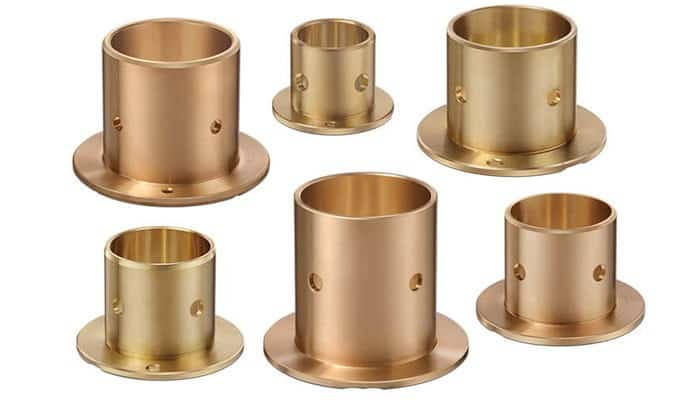
On the other hand, brass has a lower level of corrosion resistance than bronze and copper. However, some grades of brass containing high amounts of manganese are usually more resistant to corrosion. In conclusion, bronze is the most corrosion-resistant material of the three metal options.
· Durability
Bronze is a sturdy and strong material that does not bend easily. Its high corrosion resistance also makes it very durable. Copper is also a robust material. However, it is more flexible than bronze. You can easily stretch and bend it, but it hardly cracks or scratches. Therefore, it is a durable material. Brass is, however, vulnerable to splitting and cracking. It is also less corrosion-resistant than the other two metals.
· Weight
The weight factor also plays a crucial role in helping you select between brass, bronze, or copper. Bronze and brass have very close weights based on their densities. However, if you have to choose between bronze vs brass when you need a lightweight metal for your project, brass is the better option. This is because it is the lightest of the three metals. It has a density of about 8720 kg/cu.m.
On the other hand, bronze has a density of about 7400 to 8900 kg/cu.m. Copper is the heaviest of the three metals, with a density of 8930 kg/cu.m.
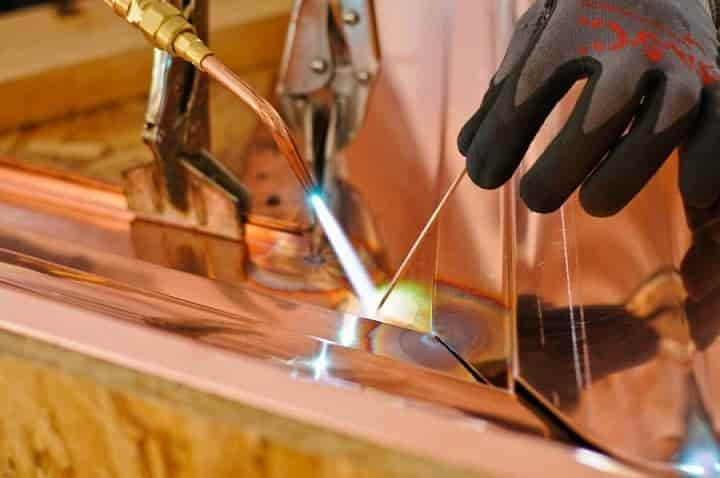
· Machinability
Copper exhibits better machinability than brass and bronze. It is a more flexible metal, enabling bending, turning, and other machining processes. Moreover, copper alloys often exhibit high ductility. Bronze is a much harder and sturdier metal that is not easily flexed. Brass is also much less flexible, making it less machinable than the other options.
· Weldability
Brass, bronze, and copper are weldable in their respective domains. These metals enable joining with silicon bronze welding, MIG equipment, or other techniques. Oxygen-free copper is usually more easily welded. The same is the case for deoxidized copper. MIG and TIG are the most popular techniques for melding this metal.
Brass alloys also support MIG, TIG, and silver soldering. However, the alloys containing lead are more difficult to weld. Basically, alloys with lower zinc content ensure easier welding. Among the bronze grades, unleaded bronze has fair weldability. However, they usually crack under stress, and SMAW may be the best technique.
The table below summarizes their material properties differences.
| Brass | Copper | Bronze | |
| Element Composition | Primary: Copper and ZincOthers: Lead, manganese, iron, aluminum, silicon, etc. | Copper | Primary: Copper and tin others: Nickel, aluminum, zinc, phosphorus, etc. |
| Corrosion Resistance | Good corrosion resistance | Excellent corrosion resistance | Excellent corrosion resistance |
| Weight | 8720 kg/cu.m | 8930 kg/cu.m | 7400 – 8900 kg/cu.m |
| Durability | Highly durable | Durable | Highly durable |
| Machinability | A lower degree of machinability | High machinability | Moderate machinability |
| Weldability | Good level of weldability | High level of weldability | High level of weldability |
Conductivity Differences Between Brass, Bronze and Copper
Electrical and thermal conductivity differences will help you make the best choice for your applications.
· Electrical Conductivity
Copper is one of the materials used in the manufacturing industry to rate electrical materials. Manufacturers express the conductivity rating of these materials relative to copper. Thus, we could say that copper has 100% electrical conductivity.
On the other hand, brass is about 28% as conductive as copper, while bronze has about 15% electrical conductivity. The lower ratings of bronze could be due to its alloying element composition.
· Thermal Conductivity
Bronze has the highest thermal conductivity of the three metals. Its thermal conductivity is between 229 and 1440 BTU/hr-ft²-°F. Copper follows with 223 BTU/hr-ft²-°F. Brass is the least thermal conducive among the three metals, with thermal conductivity of 64 BTU/hr-ft²-°F.
Strength Differences Between Brass, Bronze and Copper
The strength of a material is essential in helping you decide on the most suitable applications. Thus, you must consider this factor when comparing brass vs bronze vs copper.
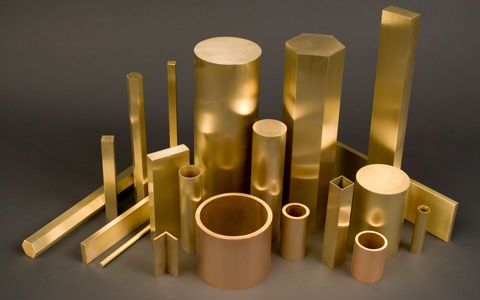
· Tensile Strength
Bronze is usually the ideal choice in applications where metal strength is essential. This is because it has a tensile strength between 350 to 635 MPa. Brass follows with an ultimate tensile strength of 338 to 469 MPa. On the other hand, copper has a tensile strength of 210 MPa.
· Yield Strength
Bronze boasts a higher yield strength than brass and copper. It has a yield strength of 125 – 800 MPa, while brass has about 95 to 124 MPa. Copper possesses the least yield strength at 33.3 MPa.
Ability to Form
Your material must satisfy quality requirements in terms of formability. Thus, it will be best to make the right selection.
· Formability
Copper can undergo plastic deformation without damage. Therefore, it has exceptional formability, so manufacturers produce micron-sized wires with this metal. Some bronze alloys are also very formable. A good example is PB1 phosphor bronze which enables cold forming. On the other hand, brass is harder to form because of its very low flexibility.
· Melting Point
The lower the melting point of a material, the more formable. Copper’s melting point of 1085 °C may limit its formability. On the other hand, bronze has a melting point of 913 °C while brass has a melting point of 927 °C.
Appearance and Touch
Differentiating brass, bronze, and copper can be tricky because they have similarities in their appearance. However, there are some subtle differences to note.
· Color
Distinguishing between bronze and brass may be easy with their color. Brass comes in a subdued yellowish-gold color, similar to a plain stone. This makes brass a perfect material for fittings. On the other hand, bronze has a somewhat reddish-brown color. Bronze’s color is quite similar to that of copper. But bronze’s reddish-brown has a dull gold shade, while the reddish-brown color of freshly exposed copper is very distinctive.
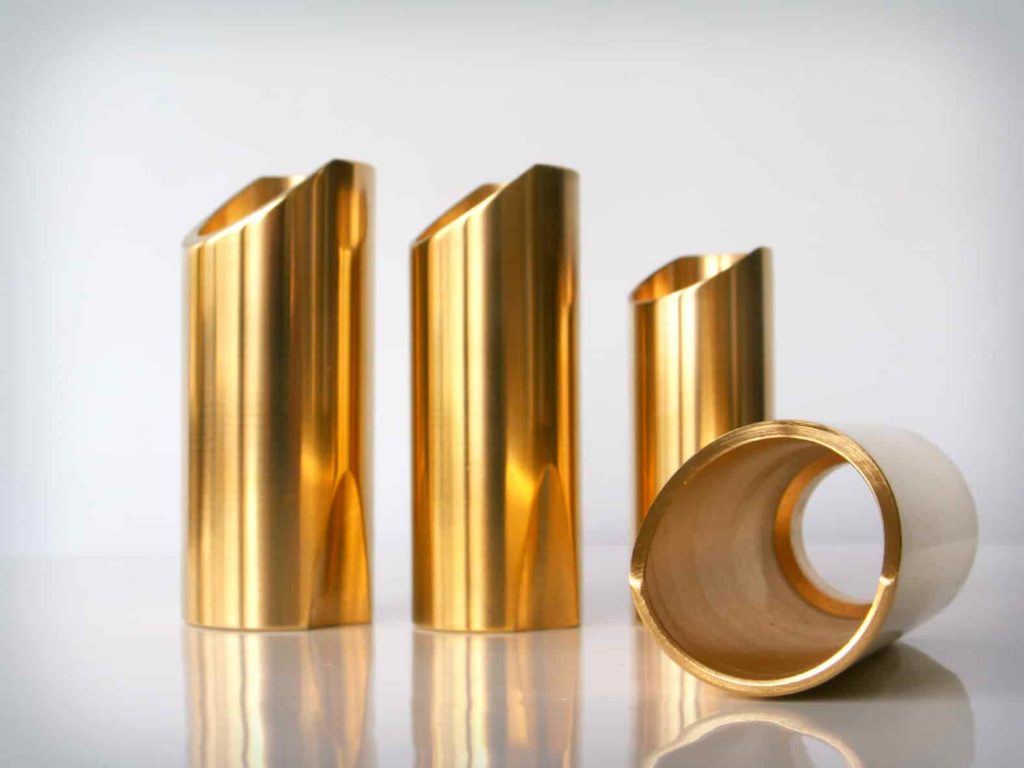
· Hardness
Copper scores 35 on the Brinell hardness scale, while brass scores between 55 and 73. On the other hand, bronze has a score between 40 and 420. This result shows that bronze is the hardest of the three metals. In addition, it is more brittle and, thus, more prone to fracturing.
Pricing & Options
Brass, bronze, and copper often exist in different grades. Thus, their price usually varies. While their prices may vary based on the alloys, copper is typically more expensive than brass and bronze. The reduction in bronze price may be due to the lower copper content in the alloy. Likewise, brass is the least expensive because it contains more zinc content. Since zinc is cheaper than copper, the price of brass is reduced.
RapidDirect provides professional industrial metal fabrication services with competitive pricing and fast lead time. Don’t hesitate to upload your design files to start your project!
Applications of Brass, Bronze and Copper
While these metals are suitable for several similar applications, there are some peculiarities. Here are some important applications of brass, bronze, and copper.
Applications of Brass
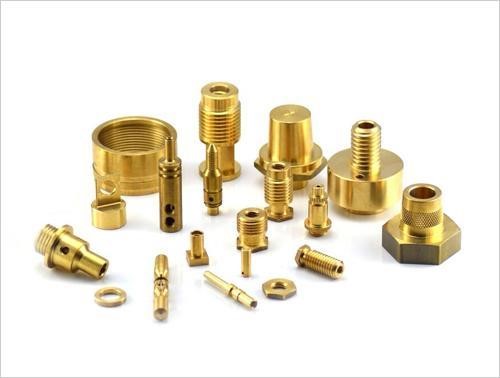
Brass is renowned for its aesthetic and decorative advantages. Its machinability and workability also make it useful in several other industries. Some of the applications of brass include:
- Plumbing and piping materials
- Fittings
- Electronics and electrical terminals
- Musical instruments
- Clock and watch components
Applications of Bronze
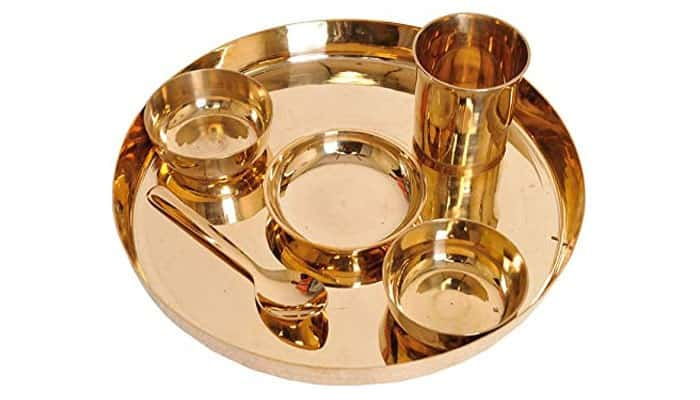
Bronze metal sheets are also suitable for several industrial applications. Its availability in various grades makes it very versatile. Some of its applications include the following:
- Bushings and bearings for automobile transition
- Marine components, e.g., propellers, ship, and boat fittings
- Electrical connectors and electric motors
- Springs
- Petrochemical components and oil rig tools
Applications of Copper
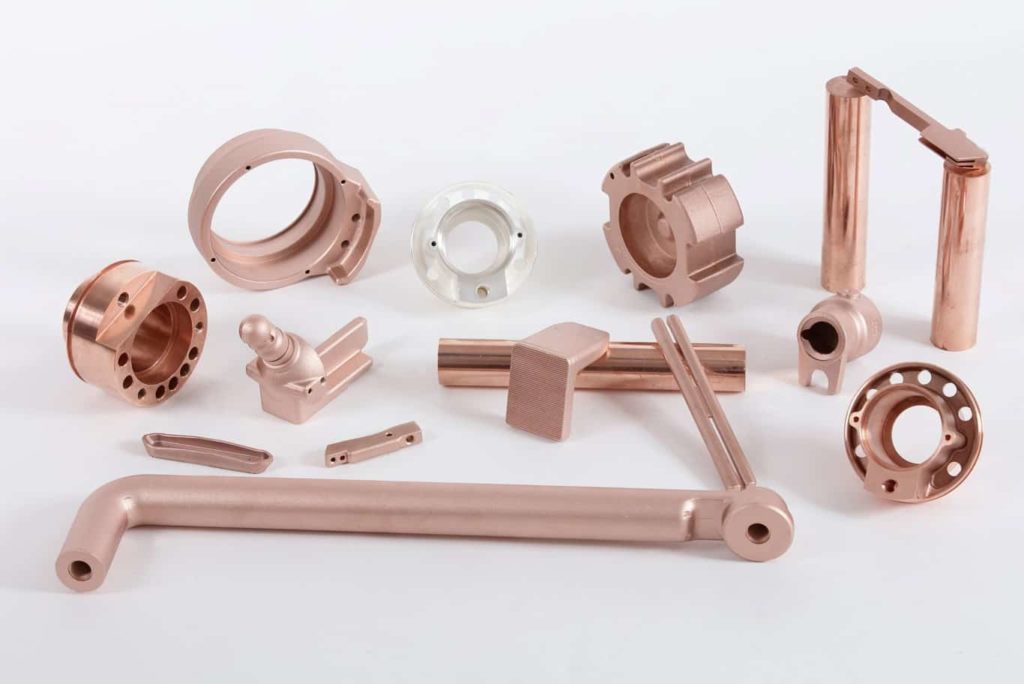
Copper has several benefits, ranging from excellent machinability, formability, and conductivity. These features make it useful in an extensive array of industries. Some copper applications are:
- Electric motors
- Telecommunication components
- Heat sinks and heat exchangers
- Vacuum tubes
- Anti-biofuel components in submarines
- Architectural components
Benefits of Brass, Bronze, and Copper
The commercially available grades of these metals prove that they are in high demand across several industries. This is due to their many beneficial properties.
Some of the benefits of brass include:
- Durability. Since this metal has copper and zinc as its major elemental components, it has low susceptibility to corrosion. Thus, its durability and performance remain intact for a long time.
- Anti-bacterial properties. The copper present in brass can produce ions that can attack some microorganisms. This advantage makes brass suitable for sanitation and water filtration systems.
- Aesthetics. Unlike bronze and pure copper, brass is more attractive. In addition, its natural luster makes it ideal for decorative elements.
Bronze also has the following advantages:
- Corrosion and Fatigue Resistance. Bronze metal has copper content that oxidizes to form a protective layer, preventing corrosion. It is also a hard material with excellent tensile strength to help him withstand stress applications.
- High Dimensional Precision. Bronze is also more suitable for precision CNC machining services.
- High Thermal and Electrical Conductivity. This advantage makes it suitable for electrical applications where conductivity is crucial.
- Excellent Surface Finishes. Bronze supports a wide range of metal surface finishing techniques. Therefore, it can be a replacement for brass, even when aesthetics is a significant concern,
Some of the benefits of copper for fabrication purposes include:
- High Thermal and Electrical Conductivity. This property and its relative cost-effectiveness make copper highly valuable in the electrical and electronics industry.
- Excellent Machinability. Copper is soft, malleable, and ductile, making it easy to stretch, bend, and shape without breakage. Thus, it is a versatile metal for manufacturing various components.
- Corrosion Resistance. Copper has a low reactivity which translates to low possibilities of corroding. This makes it more useful for pipes and other applications requiring atmospheric exposure.
- Recyclability. It is easy to recycle copper without losing its quality. This process is cheaper than processing new, pure copper. In addition, recycling extends the availability of this metal.
Brass vs Bronze vs Copper: Which One Should You Choose?
Knowing the difference between brass, bronze, and copper will help you learn how to choose sheet metal for rapid prototyping. The selection process is critical for high-quality results in the design and manufacturing stage. When selecting, you should keep the following in mind:
- While the three metals offer increased durability, they do not have the same degree of machinability. You should consider this to ensure smoother machining and cost reduction.
- Budget is another crucial consideration. Brass is the cheapest of the three metals, while copper is the most expensive. Therefore, if budget is a concern, you may want to go for brass.
- Ultimately, application and utility also come to play in your selection. The eventual use of your component will determine the type of metal you choose. Copper will be beneficial whenever you need electrical conductivity. Bronze s suited for saltwater applications because of its corrosion resistance. It is also durable and hard, and it can withstand fatigue.
RapidDirect: Manufacturing Metal Parts and Prototypes for You
If you need more information about these metal materials or you are confused about which one to choose, let RapidDirect help. Having expert advice during material selection gives you the edge over your competition. At RapidDirect, we boast of the best technicians and professional machinists who will choose the best material for your project.
Additionally, we provide manufacturing and prototyping services, including sheet metal fabrication, CNC machining, injection molding, and 3D printing. After uploading your design file, you will get automated quotes and DfM analysis within 12 hours. Our manufacturing processes are transparent, and we can guarantee you up to 30% price reduction. Contact us today, and let’s get started!
FAQs
Bronze generally shows greater hardness properties than pure copper. So, it is more durable and more resistant to wear and tear. However, brass also has enhanced strength and ductility. It is the cheapest of the metal, making it a considerable choice. Copper is corrosion-resistant, electrically conductive, and highly machinable.
Brass is cheaper than bronze. This is because brass contains high zinc content, and bronze contains higher copper content. Since zinc is generally cheaper than copper, bronze has a greater value perception than brass.
Brass is useful for a wide range of applications. This includes plumbing and piping material, fittings, electronics and electrical terminals, musical instruments, and more.


